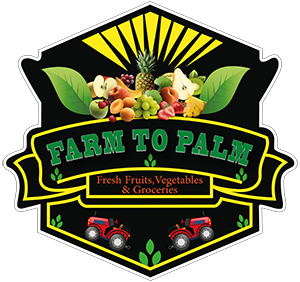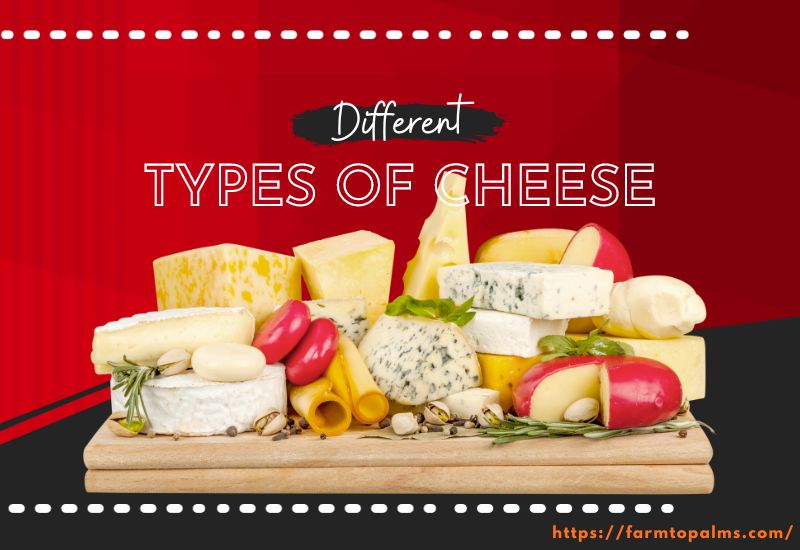Explore the world of cheese beyond your fridge staples like mozzarella, cheddar, Parmesan, and Brie. Cheese-making begins with milk from cows, sheep, goats, or water buffaloes. Additives turn the milk into curds and whey; the curds become cheese. Each variety boasts unique flavors and uses; swapping them can alter a dish significantly. For instance, Ree Drummond’s classic mac and cheese uses cheddar, jack, or fontina, while her fancy version blends gruyère, fontina, parmigiano-reggiano, and goat cheese for a distinct taste.
Dive into our concise A to Z guide of the 30 most popular cheeses to elevate your culinary creations. Grab your cheese grater and find your new favorites!
What Is Cheese?
Cheese is made by coagulating milk protein casein from various animals’ milk, leading to a diverse array of flavors, textures, and forms. Acidification and adding enzymes or bacterial cultures cause the milk to coagulate, forming curds, which are then processed into cheese. Many cheeses are aged and may include additional flavorings such as herbs, spices, or smoke, with some also gaining color from annatto. Cheesemongers specialize in the selection and care of cheeses.
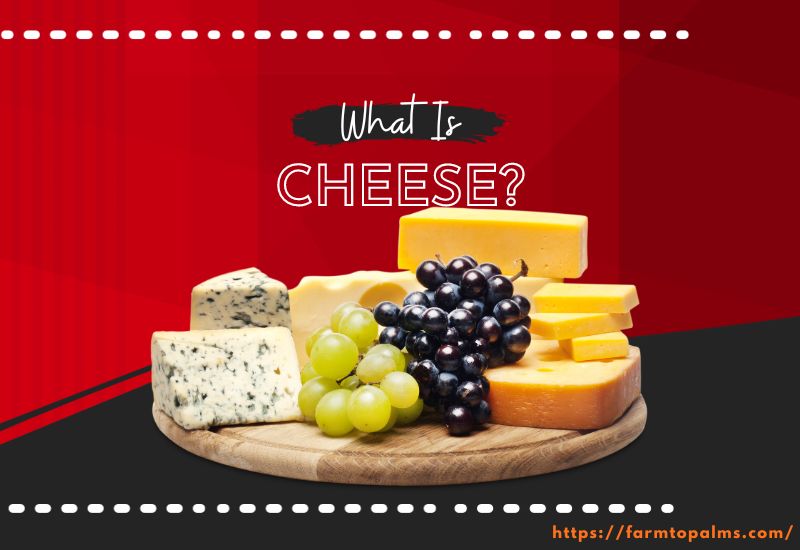
Some cheeses use acid, like vinegar or lemon juice, to curdle the milk. Vegetarian rennet substitutes, often derived from fungi or thistles, are also used. Local cheesemakers can benefit from fresh, affordable milk.
Cheese is appreciated for its durability, nutritional value, and longer shelf life than milk. Hard varieties tend to last longer than soft ones. Various packaging methods, including vacuum sealing and gas flushing, help preserve and distribute cheese.
Nutrition Facts
| Nutrient | Amount Per 100 grams | % Daily Value* |
|---|---|---|
| Calories | 402 kcal | |
| Total Fat | 33 g | 50% |
| Saturated fat | 21 g | 104% |
| Cholesterol | 105 mg | 35% |
| Sodium | 621 mg | 25% |
| Potassium | 98 mg | 2% |
| Total Carbohydrate | 1.3 g | 0% |
| Dietary fiber | 0 g | 0% |
| Granulated Sugar | 0.5 g | |
| Protein | 25 g | 50% |
| Vitamin C | 0% | |
| Calcium | 72% | |
| Iron | 3% | |
| Vitamin D | 6% | |
| Vitamin B6 | 5% | |
| Cobalamin (Vitamin B12) | 13% | |
| Magnesium | 7% |
*Percent Daily Values are based on a 2,000-calorie diet. Your daily values may be higher or lower depending on your calorie needs.
How many different types of cheese?
Types of cheese chart
| Cheese Type | Country of Origin | Milk Source | Aging Period | Characteristics |
|---|---|---|---|---|
| Fresh Mozzarella | Italy | Buffalo, cow, or mix | None | Creamy, stretchy, mildly tangy, smooth texture, white color |
| Ricotta Cheese | Italy | Cow, sheep, goats, water buffalo | None | Soft, creamy, slightly grainy texture |
| Cream Cheese | USA | Cow | None | Crumbly, sour, and salty flavor |
| Mascarpone | Lombardia, Italy | Cow | None | Mild at room temperature, uniformly white, mildly tangy flavor |
| Cottage Cheese | USA | Cow | None | Creamy, crumbly texture, delicately salty and tart flavor, curd-like appearance |
| Feta Cheese | Greece | Sheep, or sheep and goat mix | Three months | Crumbly, sour, and briny flavor |
| Queso Fresco | Spain | Cow or cow and goat mix | A few days | White and crumbly with a blend of tart and salt |
| Gorgonzola | Italy | Cow | Three to four months | Crumbly pale body with green/blue mold, spicy yet creamy, salty, and earthy flavor |
| Roquefort | France | Sheep | Three to five months | Moist and crumbly with blue mold streaks, sharp and tangy |
| Stilton Cheese | England | Cow | Four to eight months or longer | Crumbly yet soft, intense, rich flavor, creamy with subtle nutty and salty notes |
| Brie Cheese | France | Cow | Five to six weeks | Soft, mild, edible white mold skin, gooey buttery inside |
| Cambozola | Germany | Cow | Minimum of two months | Combination of camembert and gorgonzola flavors, buttery and earthy with mild blue cheese sharpness |
| Camembert | France | Cow | Four weeks | Creamy with white rind and yellowish interior, earthy, nutty, grassy, fruity notes |
| Chevre | France | Goat | Four weeks or longer | Soft and buttery white cheese from goat milk |
| Gouda | Netherlands | Cow | One to 36 months | Rich caramel-like flavor, good melting cheese |
| American Cheese | USA | Cow | 60 days | Processed with milk, fats, whey concentrate; rich and salty flavor |
| Muenster Cheese | France | Cow | Five to seven weeks | Mild buttery flavor with a red-orange rind from paprika |
| Havarti | Denmark | Cow | Three months | Buttery and slightly tart taste combo; smooth pale yellow appearance |
| Fontina Cheese | Italy | Cow | Three months | Rich and creamy yet pungent; orange rind with holes inside |
| Cheddar Cheese | England | Cow | Two months or longer | Firm texture with sharp and earthy flavor; color can vary from pale yellow to bright orange |
| Gruyere Cheese | Switzerland | Cow | Three to six months | Washed-rind Swiss cheese; pale yellow with small holes; creamy texture despite being semi hard |
| Monterey Jack | USA | Cow | Three to six weeks | Mild buttery flavor and delicate sweetness; pale yellow color |
| Manchego | Spain | Sheep | Two weeks to a year | Firm, crumbly body; rich, zesty, salty with sharpness varying by age |
| Emmental | Switzerland | Cow | Two to eight months | Pale yellow with large holes; complex at room temperature but melts well; buttery and fruity flavor |
| Halloumi Cheese | Cyprus | Goat and sheep | One to two months | Chewy texture and tangy flavor; high melting point; grilling cheese |
| Parmesan Cheese | Italy | Cow | 12 months or longer | Nutty taste; pale, gritty body; commonly grated on top of dishes |
| Parmigiano-Reggiano | Italy | Cow | 12 to 40 months | Authentic Italian hard cheese; tangy and fruity taste when young; crumbly and firm as it ages |
| Pecorino Romano | Italy | Sheep | Five months or longer | Crumbly texture; white to pale yellow color; tough natural rind; buttery and spicy flavor |
| Asiago Cheese | Italy | Cow | Four months to more than a year | Sweet and nutty; complex and flavorful when aged; milder taste when young |
| Grana Padano | Italy | Cow | Nine months or longer | Crumbly and grainy texture; delicately buttery and slightly nutty flavor |
Types Of Fresh Cheese
Fresh cheese sets itself apart from other types of cheese by eschewing the customary aging or similar artificial maturation processes. Typically characterized by their soft, crumbly texture, cheeses in this category are ideally savored soon after production. Explore some of the most beloved varieties of fresh cheese in the following list.
Fresh Mozzarella

Fresh mozzarella is a distinct type of cheese compared to shredded mozzarella. It is a soft, fresh cheese that is not aged and is meant to be consumed immediately after production.
Initially, fresh mozzarella was made from the milk of Italian Mediterranean buffalo, which were likely brought to Italy during Roman times or later during Barbarian invasions.
However, since these buffalo are only found in a few countries, mainly Italy and Bulgaria, most mozzarella today is made from cow’s milk.
Most mozzarella cheese available in local supermarkets is made from cow’s milk. If you want to find traditional fresh mozzarella, look for the label “mozzarella di bufala.”
Fresh mozzarella has a soft texture and mild, milky flavor. It should be eaten at room temperature to appreciate its subtle and fresh taste.
You can easily find fresh mozzarella in supermarkets and specialty stores. Prices may vary slightly depending on the producer and the source of milk, with buffalo milk being more expensive than cow’s milk.
The milk from Italian Mediterranean buffalo is three times more costly than cow’s milk and is also expensive to transport, reflected in its price.
Ricotta
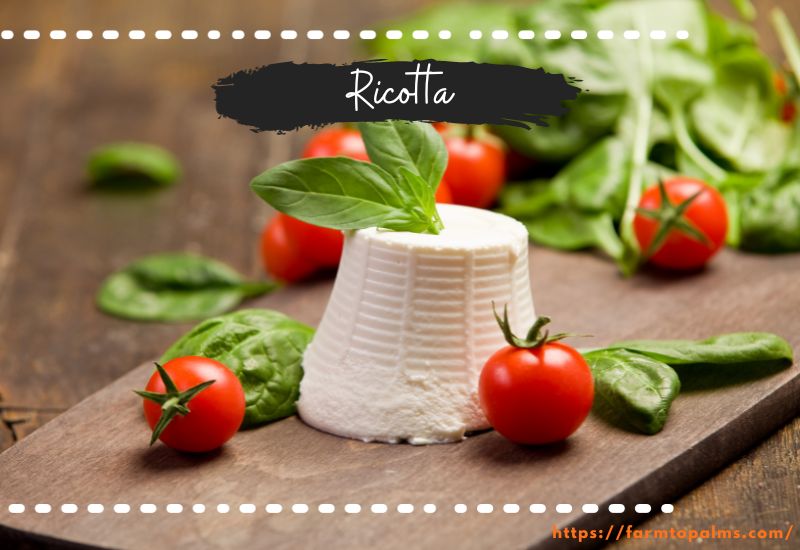
Ricotta, often referred to as a cheese akin to fluffy clouds, is a light, creamy delight. While you may be an avid fan or an occasional taster, understanding ricotta’s essence is vital.
This cheese can be made from cow, sheep, goat, or water buffalo milk, with cow’s milk being the most common in grocery stores. ‘ricotta’ means ‘recooked’ in Italian, signifying its origin as a whey cheese.
Cheese production involves separating milk into curds and whey. Traditional ricotta is crafted from the minute curds remaining in the whey after the primary cheese is made.
The process involves reheating the whey, typically with added whole milk and an acid like vinegar or citrus juice, to coagulate the remaining curds, which are then strained through cheesecloth to yield ricotta.
In the United States, ricotta is mainly produced from whole milk rather than whey. The method remains similar: heat milk, induce coagulation, and separate the curds from the whey to form this soft, fresh cheese.
Cream cheese
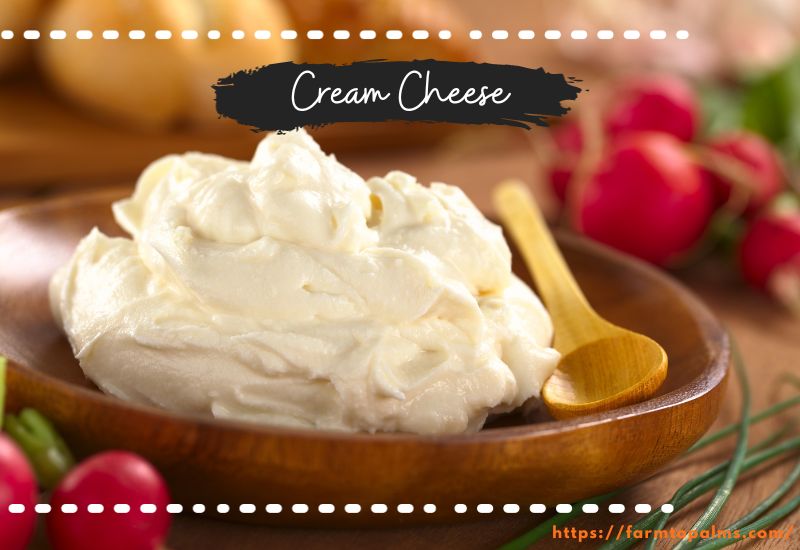
Cream cheese is a soft, mild, fresh cheese made from milk and cream. Unlike aged soft cheeses such as Brie and Neufchâtel, cream cheese is meant for immediate consumption and shares taste, texture, and production similarities with Boursin and mascarpone. Industrial cream cheese often includes stabilizers like carob bean gum and carrageenan.
The FDA mandates that cream cheese has at least 33% milk fat, a maximum % moisture content of 55%, and a pH range between 4.4 to 4.9. It must contain a minimum of 30% milk fat in Canada and no more than 55% moisture. Definitions and fat content requirements can vary by country.
Cream cheese was developed in the U.S. in the 1870s.
Mascarpone cheese
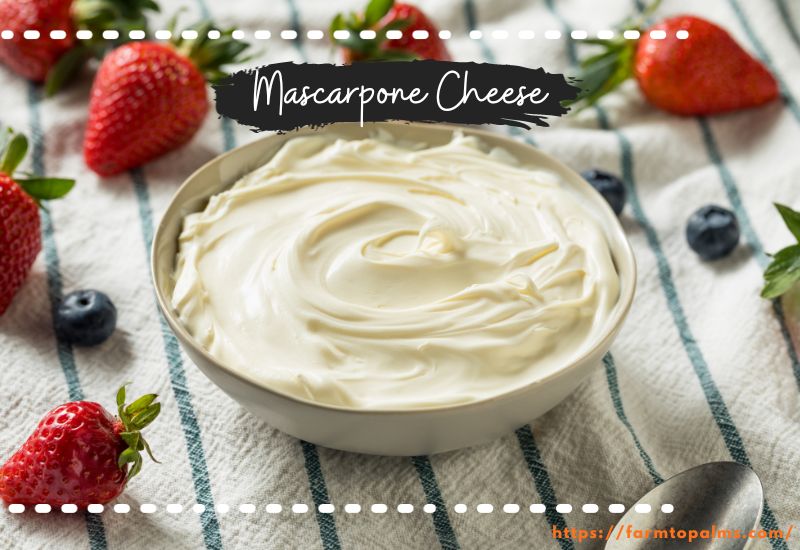
Mascarpone cheese, a delicacy from Italy, is renowned for its simple yet rich composition. Crafted from two ingredients – heavy cream and citric or tartaric acid – this cheese is a testament to the elegance of Italian cheese-making.
The process commences with the heating of cream, followed by the addition of acid, which acts as a coagulant, transforming the liquid into a thickened state. This newly solidified cream is then strained through cheesecloth, purging any extra moisture, resulting in a creamy consistency with a fat content ranging from 60 to 75 percent.
The luscious spreadability and velvety texture of mascarpone render it an exquisite addition to a myriad of culinary creations. Its taste profile, characterized by a subtle sweetness and a hint of acidity, resembles other dairy favorites such as cream cheese, ricotta, creme fraiche, and clotted cream. This unique blend of flavors enables mascarpone to shine across both the realms of sweet and savory, enhancing dishes with its smooth and indulgent essence.
Cottage cheese
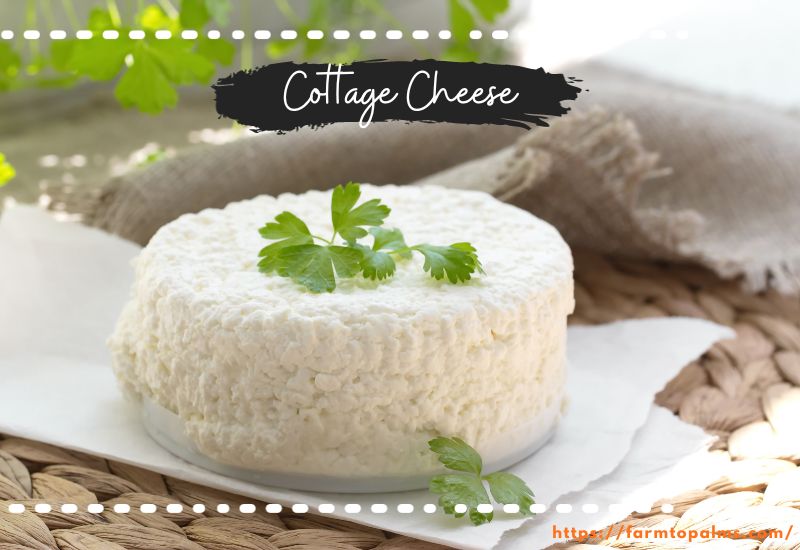
Cottage cheese, a fresh variety not subjected to aging like its counterparts Parmesan and Cheddar, consists primarily of curds—formed by the acid-induced milk curdling—and cream.
This category of cheese, which also includes ricotta, mozzarella, Feta, and goat cheese, boasts a history spanning thousands of years. However, the term “cottage cheese” emerged around the mid-19th century.
Jesse Merrill, the co-founder and CEO of Good Culture, notes that cottage cheese is believed to be the first cheese crafted in America, with origins tracing back to European traditions.
The quaint name “cottage cheese” originates from the humble farmhouses or cottages where it was traditionally made. Leftover milk from butter production was repurposed to create this simple yet delicious cheese.
Feta
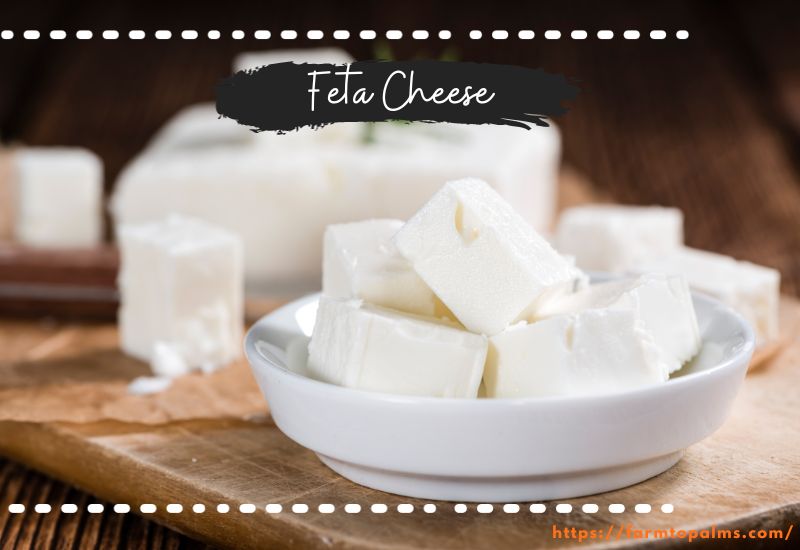
Feta, a traditionally soft cheese, is crafted from pure sheep’s milk or a blend of sheep and goat’s milk. Originating from Greece, this cheese undergoes a saline solution curing process, classifying it as a pickled variety.
Over time, Feta develops a sharper and more pronounced salty taste while its consistency grows firmer. Visually, Feta is recognizable by its creamy white appearance, dotted with tiny holes and possessing a texture that easily crumbles.
Typically, Feta is sold in block form without a rind, though you may also encounter it pre-crumbled in sealed containers, optionally seasoned, and either with or without brine.
Despite its higher price relative to more common cheese varieties, the robust flavor of Feta means that a small amount can significantly enhance a dish.
Queso Fresco
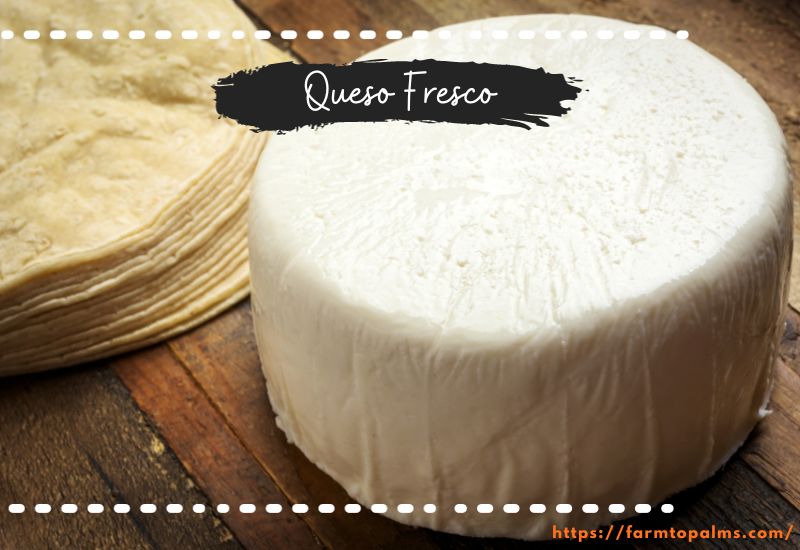
Queso Fresco is a delightful, soft cheese originating from Mexico. It is traditionally crafted from raw cow’s milk or a cow and goat milk blend. You’ll most commonly find versions made with pasteurized milk in the United States for safety.
Its flavor profile is subtle yet inviting, with a fresh, bright, and mild milky taste. It’s ideal for many culinary creations, providing a pleasing balance to more decadent fare such as enchiladas or huevos rancheros.
Alternatively, it accentuates the lightness of dishes like crisp salads and char-grilled vegetables. Notable for its signature salty-sour tang, Queso Fresco is creamy due to its freshness, yet it does not carry the richness or buttery flavor often associated with creamier cheeses.
Types Of Blue Cheese
Blue cheeses owe their striking green or blue veins to a distinctive mold known as Penicillium, which imparts their signature marbling and their robust flavor profile. Despite being notorious for their strong scent, these cheeses present an unparalleled gastronomic adventure that’s truly unforgettable. Delve into the world of blue-veined cheeses by sampling some of the most celebrated varieties available.
Gorgonzola
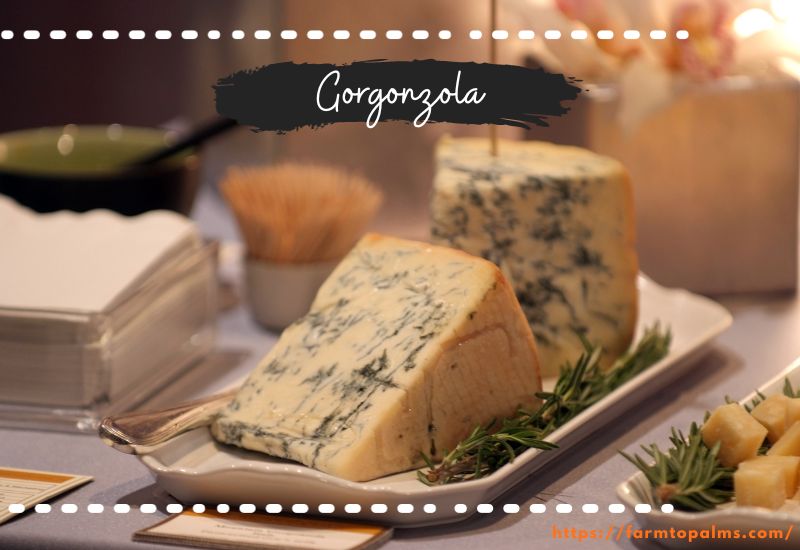
Gorgonzola is a rich, Italian blue cheese made from unskimmed cow’s milk from Lombardy. This cheese is typically aged between three to six months and is known for its creamy texture and light marbling of blue-green veins. It’s less intense than other blue cheeses, offering a gentle introduction to those new to this flavor profile.
There are two main types of Gorgonzola:
- Dolce (Sweet): This variety is soft, buttery, and spreads quickly.
- Piccante (Spicy): This is a firmer, more crumbly cheese with a bolder taste.
For recipes that require crumbled or chunky blue cheese, piccante is the ideal choice. If you need a cheese that melts well into a smooth texture, go for Dolce Gorgonzola.
Roquefort
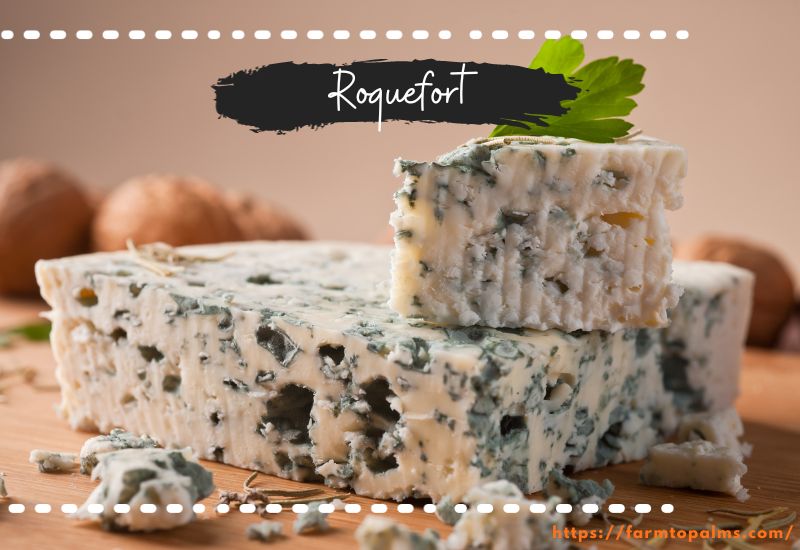
Roquefort, a symbol of French craftsmanship, is a distinguished blue cheese beloved by royalty. Its characteristic blue veins and moist, crumbly texture are reminiscent of the limestone caves near Toulouse, where it matures. Produced from the rich milk of Lacaune sheep grazing in the Occitanie region, this cheese has a robust, rounded flavor with a creamy, aromatic, and boldly tangy profile.
For an exquisite tasting experience, pair Roquefort with sweet honey and crisp apples, or enjoy it alongside various meats to complement its salty zest.
Stilton cheese
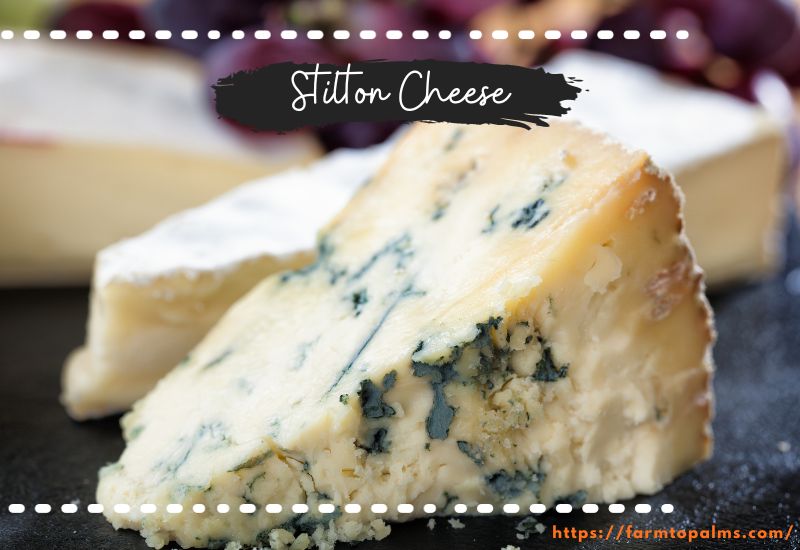
Stilton cheese boasts a visually stunning marbled interior with a texture that is both crumbly and tender, a delicate contrast to its robust flavor profile. Upon tasting, one is greeted with a complex fusion of rich, creamy, and nutty notes, culminating in a distinctly salty aftertaste on the palate.
The cheese’s exceptional quality can be traced back to its source—cows that roam the verdant pastures of England’s Midlands. This idyllic region, nestled amongst the moors, provides nutrient-rich forage that profoundly influences the exquisite taste of authentic Stilton.
When it comes to culinary pairings, Stilton shines. It can elevate the simplest dishes, from pasta and risotto to the most refined desserts. Salads are particularly enhanced when sprinkled with light crumbles.
For a harmonious cheeseboard, pair Stilton with the sweet mellowness of honey, the earthy crunch of walnuts, and the fresh crispness of sliced apples, accentuating the cheese’s myriad flavors.
Types Of Soft Cheese
Adding a lusciously creamy and melt-in-your-mouth white cheese is essential for the ultimate grazing board. Soft cheese, as the term suggests, encompasses a variety of cheeses that are effortless to slice through. Characterized by their shorter maturation periods, soft cheeses retain a high moisture content, typically between 50 to 65 percent. This results in their notably tangy yet sumptuously creamy taste profiles. To elevate your upcoming gathering, delve into this curated selection of soft-ripened cheeses.
Brie
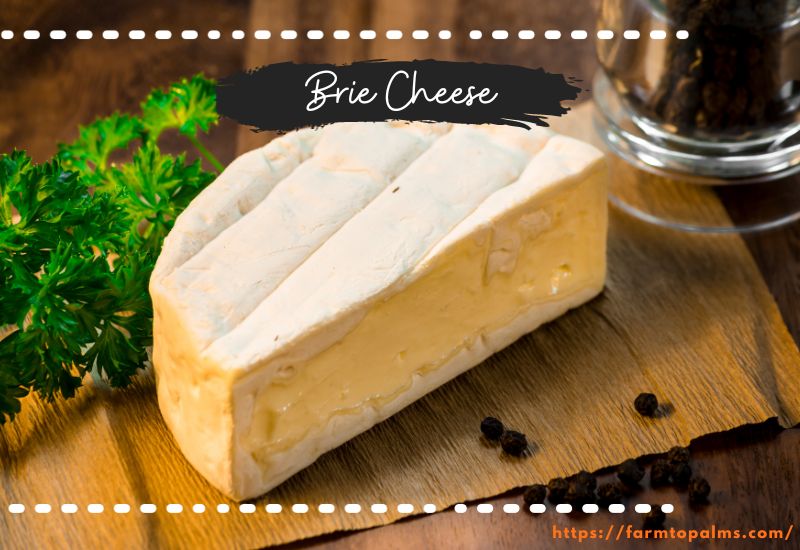
Brie is a pale, soft cheese with a velvety rind, originally from Seine-et-Marne, France. Its rich, buttery, fruity taste matures into a deeper, earthy flavor as it ages.
At the same time, authentic Brie from France is made with raw milk and can’t be imported into the U.S. due to regulations requiring a 60-day aging period, which would spoil the cheese; a modified version is sold stateside.
This stabilized Brie still offers a smooth and buttery taste but with a longer shelf life. Both domestic and international versions of Brie, often made with pasteurized milk from cows or goats, offer a milder flavor and are widely available at an affordable price.
Cambozola
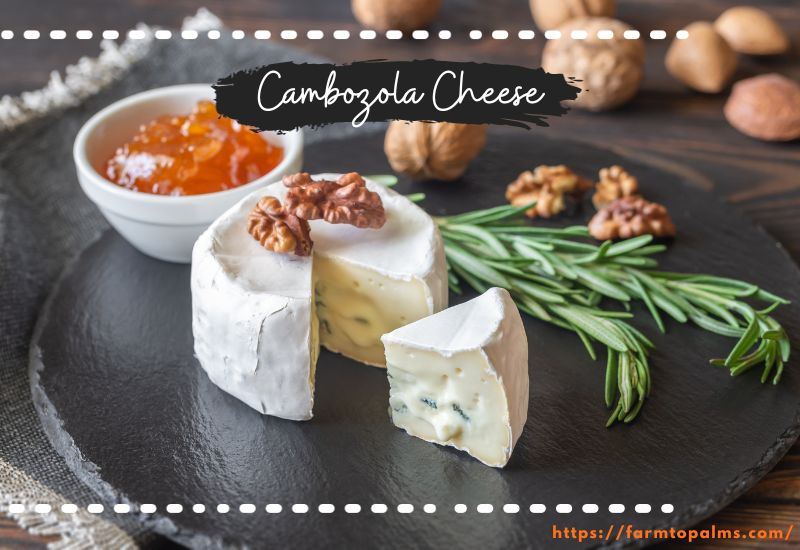
Originating from the Allgäu region of southern Germany, Cambozola is a luxurious triple cream, brie-style blue cheese with a noteworthy history.
First produced in the 1900s, it underwent a significant transformation in the 1970s under the expert care of Käserei Champignon, one of Europe’s most advanced creameries.
Dedicated to natural processes, Käserei Champignon insists on using only pure, locally sourced milk devoid of preservatives, additives, stabilizers, artificial flavors, or gluten.
Every batch of milk is meticulously tested to ensure only the highest quality and freshness, setting the stage for the exceptional Cambozola Classic cheese included in your shipment.
This cheese sets itself apart by being silkier, more sumptuous, and subtler than traditional blue cheese varieties—making it an unexpectedly delightful treat for those who may shy away from more robust blues.
Camembert
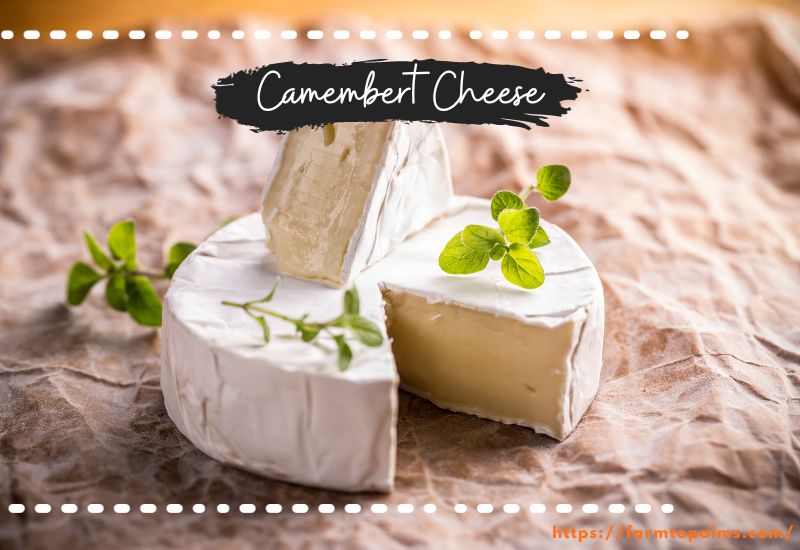
Camembert, a quintessential French cheese, hails from the Normandy region, with the village of Camembert credited for its creation in the 18th century.
Allegedly crafted by Marie Harel during the French Revolution, the authentic Camembert de Normandie boasts a Protected Designation of Origin status since 1983, ensuring it’s made according to traditional standards using raw milk from Normande cows.
While “camembert” has become a broad term for similar soft, creamy cheeses with a bloomy rind, genuine varieties adhere to strict regional and production criteria.
Globally produced Camembert styles, like Marin French Cheese’s Petite Camembert from California, offer a taste of this classic in our online cheese selection.
Chèvre
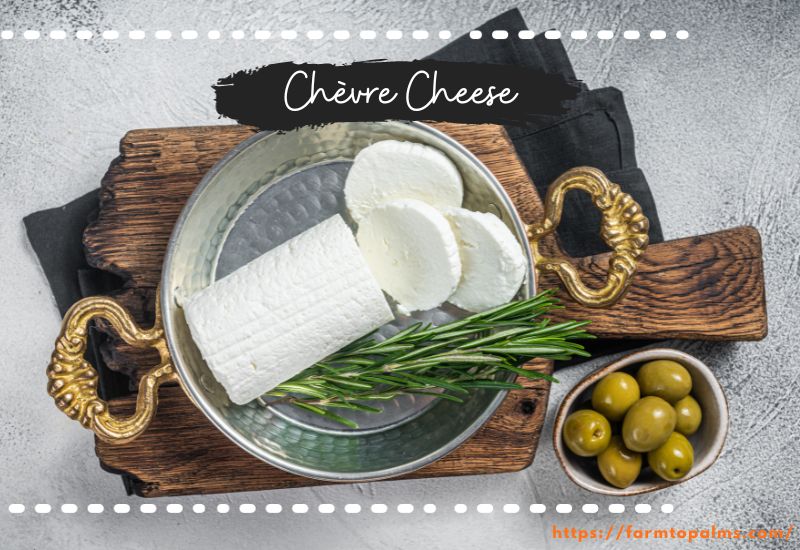
“Chèvre,” the French term for goat cheese, embodies a delightful variety of textures, from the lush, velvety softness of its fresher forms to the rich, earthy crumble of its aged counterparts.
The distinct and robust flavors of chèvre are shaped by the milk of different goat breeds, influenced further by their unique diets.
The nuances in taste also reflect the terroir—the climate, altitude, and a myriad of local environmental elements that leave an indelible mark on each cheese.
In France, where “chèvre” is casually used to denote goat cheese—rather than goat meat, which is seldom featured in their culinary scene—the term speaks to the nation’s deep connection with this dairy delicacy.
Across the Atlantic, in the United States, chèvre finds its place as a moderately priced luxury in the cheese aisles of grocery stores, inviting a touch of French gastronomy to everyday tables.
Types Of Semi-Soft Cheese
Semi-soft cheeses offer a delightful balance, being effortlessly sliceable without the mess of softer varieties. Typically, they contain a moisture level ranging from 44 to 49 percent. This category encompasses a diverse selection of cheeses made from different types of milk, providing a rich array of options to explore and enjoy.
Gouda
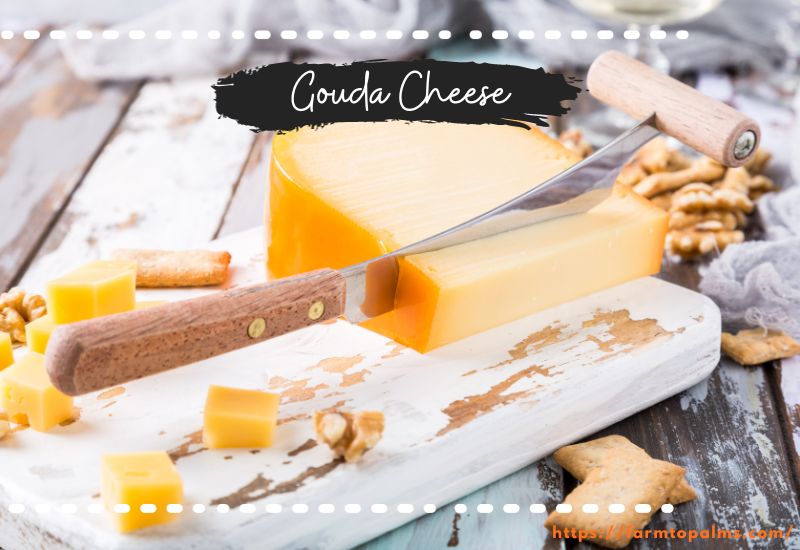
Gouda, a staple in culinary traditions worldwide, originates from the Netherlands’ southern regions. This semi-hard- cheese, crafted from cow’s milk, boasts a rich, caramel-like aroma and a firm yet supple texture.
Its flavor profile features nutty, sweet, and creamy undertones that deliver a smooth, sharp finish, depending on age.
The key to Gouda’s distinct taste lies in the cattle grazing fields and the formation of salt crystals that enhance its texture with age. Renowned for its robust taste, Gouda’s versatility shines across its many varieties.
American cheese
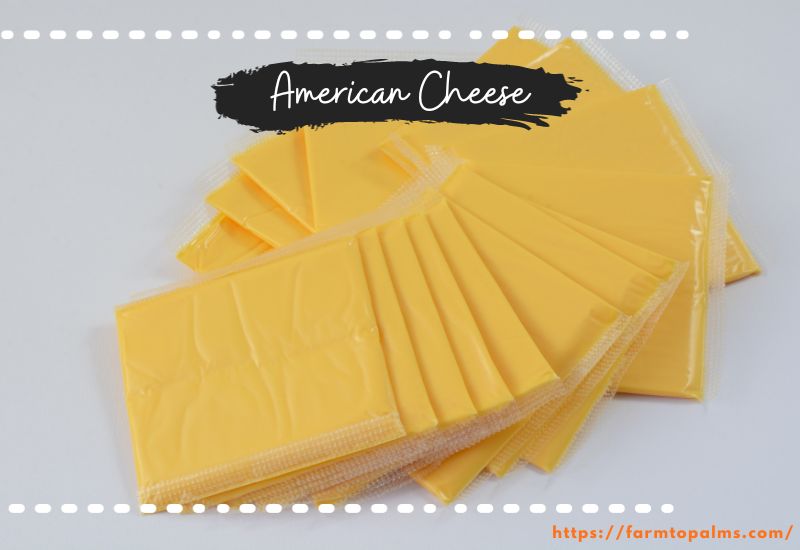
American cheese, developed in the 1910s, is a processed blend derived from cheeses like cheddar or Colby. It’s creamy, mildly salty, with a low melting point, and comes in yellow or white—the yellow tinted by annatto.
Initially, British settlers crafted American cheddar and exported it to England by the 1790s. The term “American cheese” appeared in an 1804 Kentucky newspaper.
However, James L. Kraft’s 1916 patented processed cheese redefined the term in the market, making it synonymous with the economical, processed variety commonly used on cheeseburgers today.
Muenster Cheese
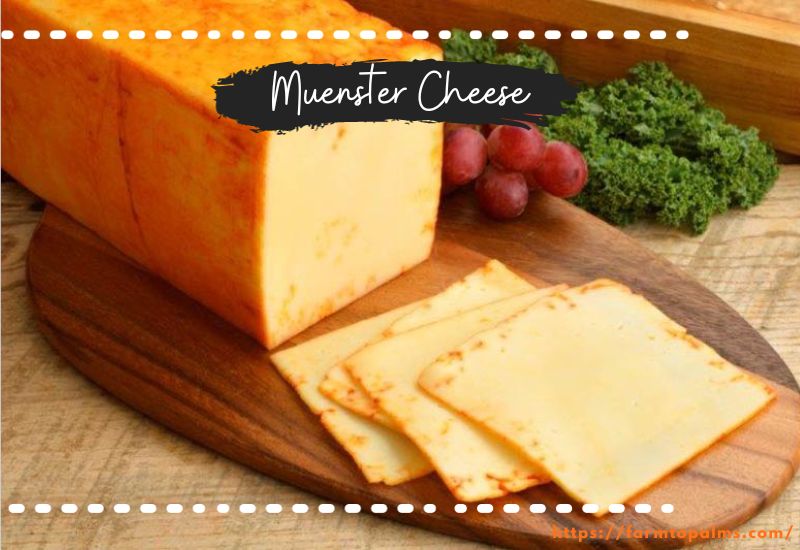
Initially crafted by Benedictine monks in France, Muenster cheese is now made using their traditional methods in Germany, France, and the USA.
Muenster starts creamy and mild, aging into a sharper tang. It’s a mix of cheddar and mozzarella flavors.
Usage Tips
- Melting: Ideal for burgers and grilled cheese.
- In Recipes: Enhances mac and cheese, pizza, and baked or scalloped potatoes without overwhelming other flavors.
- In Sandwiches: Its slight saltiness complements meats like ham or turkey well.
- For Fondue & Platters: Adds a flavorful twist to fondue or as a standalone snack.
- Breakfast Pairing: Pairs well with ham, pastries, or fruit for a light yet satisfying meal.
Havarti
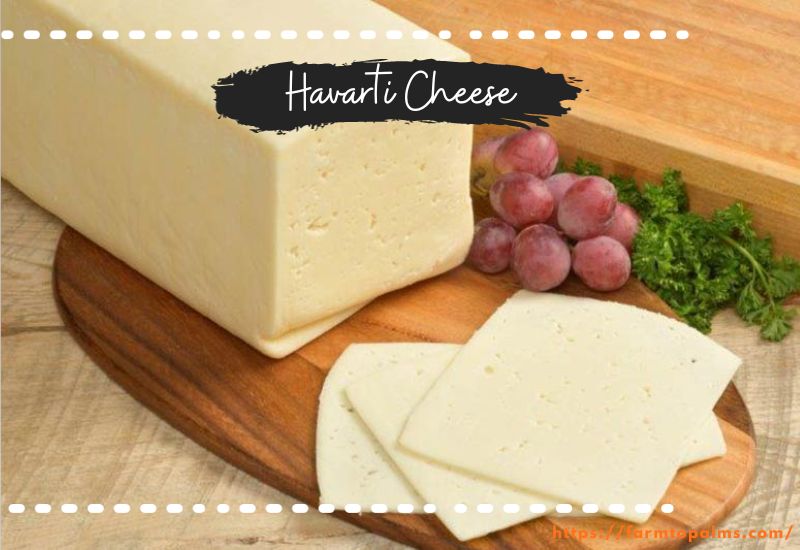
Havarti, a semi-soft cheese crafted from cow’s milk, was developed in the 1850s by Hanne Nielsen following her European tour to master cheese-making.
She innovated by washing curds in spring water, pressing them into molds, and draining them, creating a creamy cheese she named after her farm, Havarthigaard, near Copenhagen. Her products quickly found their way to Danish royalty and her Copenhagen shop.
Havarti comes in two varieties: the traditional version made with whole pasteurized cow’s milk and the richer flødehavarti or “cream Havarti,” enhanced with cream to reach a “double crème” level similar to Brie.
Wisconsin, known as “America’s Dairyland,” embraced Havarti, with its cheesemakers winning top honors for the cheese at the 2015 United States Championship Cheese Contest. In the U.S., the original recipe is more common and widely available than its creamier counterpart.
Fontina

Fontina is a cow’s milk cheese originally from Italy, now produced globally, including in the US, Denmark, Sweden, Canada, France, and Argentina.
This semi-soft to hard cheese has a mild yet distinct nutty and savory flavor with a 45% milk fat content. While traditional Italian fontina is more intense and spicy with fewer holes, versions from Sweden, Denmark, and the U.S. are milder and softer.
Authentic E.U. Fontina has a unique Matterhorn stamp and must be made from unpasteurized milk in two batches daily in the Aosta Valley.
Unlike these, which have natural rinds, some Fontinas, like those from Sweden and Argentina, are coated with red wax.
The original Aosta Valley Fontina is known for its earthy taste and good melting qualities, pairing well with roast meats and truffles.
Types Of Semi-hard Cheese
Semi-hard cheeses offer a diverse selection, with a moisture content ranging from 36% to 43%. Delve into the various types of semi-hard cheeses in this segment.
Cheddar cheese
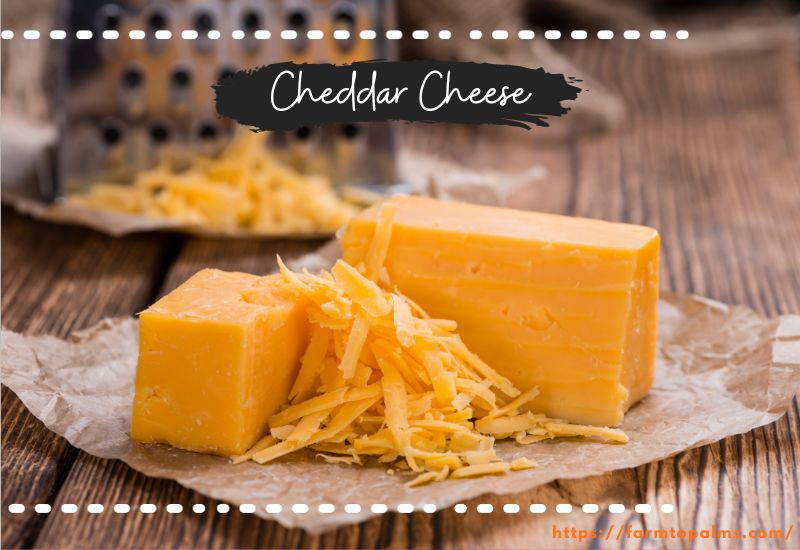
Cheddar cheese has evolved from its traditional English origins, becoming widely accessible and affordable in the U.S. due to industrial production methods.
Supermarket cheddar, available in shreds and slices, is convenient for cooking and melts well, while artisan varieties offer more decadent flavors.
Cheddar’s natural rind is often prevented by wax coating or removed before sale. The color difference between yellow/orange and white cheddar results from adding annatto, a plant-based dye used since the 17th century for consistent coloring. This dye doesn’t affect taste or texture; thus, a sharp white cheddar can taste the same as an orange one.
Gruyere Cheese
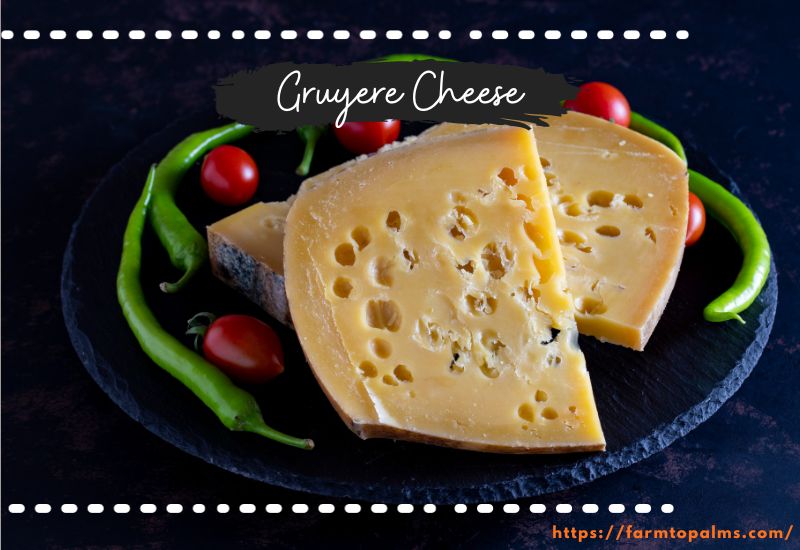
Gruyère is a hard Swiss cheese from the cantons of Fribourg, Vaud, Neuchâtel, Jura, and Berne, named after Gruyères town. It was granted AOC status in 2001 and updated to AOP in 2013.
It’s a Swiss-type cheese, sweet to salty, nutty when young, and earthy when aged. Modern Gruyère lacks the “eyes” of Emmental but can have small cracks. It’s popular in Switzerland and Europe.
Uses:
Ideal for baking, Gruyère’s flavor complements dishes like quiche without dominating them. A preferred melting cheese for fondues, it’s also crucial in French onion soup, croque-monsieur, chicken and veal cordon bleu.
It serves as a table cheese, grated over salads and pasta, and on garlic soup—pair it with white wines like Riesling, sparkling cider, and Bock beer.
Monterey Jack
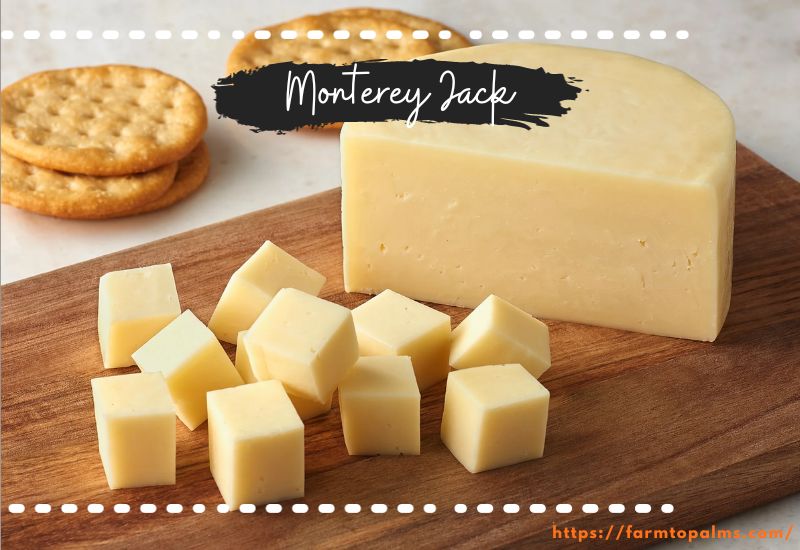
Monterey Jack, or Jack, is a semi-hard- white cheese from California made from cow’s milk. It’s mild and slightly sweet. It’s an American cheese with roots in Spanish-era Franciscan cheese-making.
It can be combined with Colby to make Colby-Jack, with cheddar for cheddar-Jack, or infused with chili peppers to create Pepper Jack. Dry Jack is aged longer for a more complex texture.
Manchego

Manchego is a Spanish La Mancha cheese made from Manchega sheep’s milk, aged 60 days to 2 years. It has a firm, buttery texture with tiny air pockets and comes in white to ivory-yellow with an inedible yellow-to-brownish rind.
The flavor is distinctive, creamy, and slightly sharp, with a sheep’s milk aftertaste. It’s protected by Spain’s denominación de origen and the EU’s PDO status.
Emmental
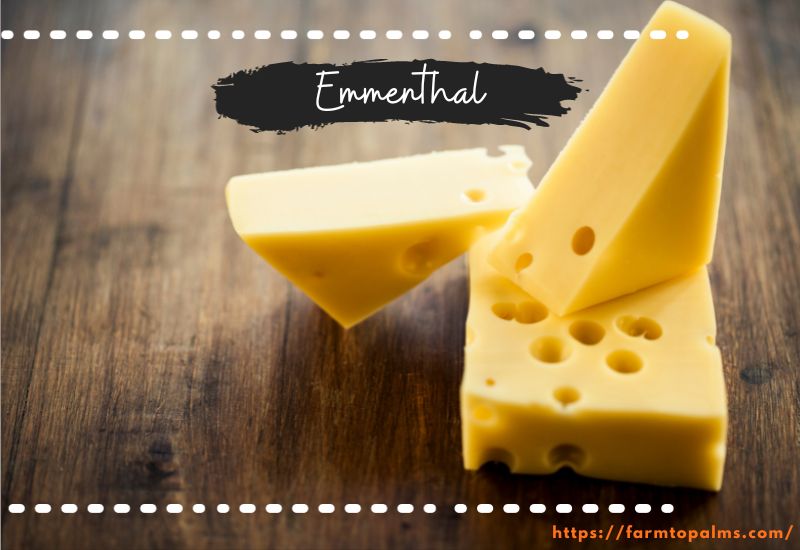
Emmenthal, Switzerland’s oldest cheese, dates back to the 13th century in Bern’s Emme valley. Protected by AOP/PDO status, it’s made following strict guidelines: fresh, raw milk from grass and hay-fed cows within specific areas, no additives or GMOs.
This smooth, semi-hard cow’s milk cheese, also known as Emmental or Emmentaler, is recognizable for its dense body and hard rind. It offers a flavor spectrum from mild and fruity in its young form, aged at least four months, to nutty and full-flavored when matured.
Halloumi Cheese
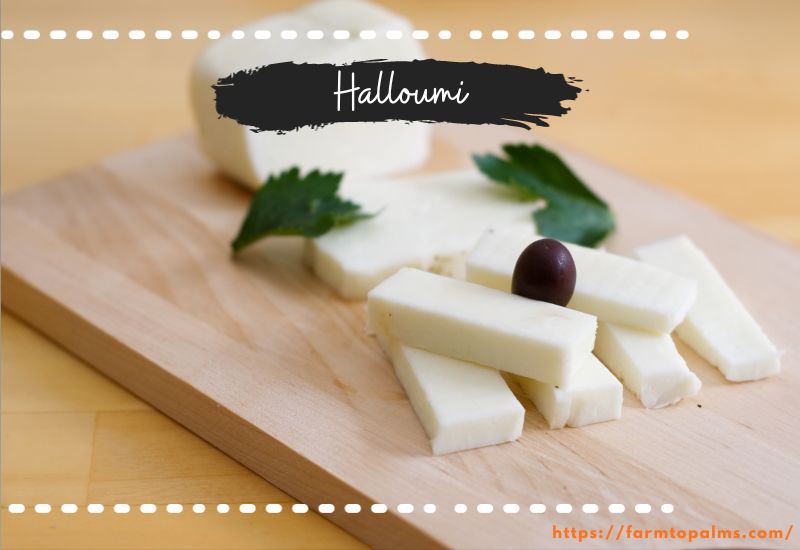
Halloumi occasionally spelled Haloumi or Hallomi, is a semi-soft cheese noted for its elastic, chewy consistency that can be likened to the fresh mozzarella found on a Margherita pizza or the texture of Indian paneer.
This cheese is traditionally crafted from the milk of goats or sheep or a blend of both, though modern variations may also incorporate cow’s milk.
Flavor-wise, Halloumi offers a unique taste that falls somewhere between mozzarella’s mildness and feta cheese’s sharp saltiness.
A single 1-ounce portion contains up to 9 grams of protein and accounts for 25% of the recommended daily intake for calcium, making it a nutritious addition to vegetarian meals.
Types Of Hard Cheese
Hard cheeses typically retain 32 percent moisture following a prolonged aging process. Their texture becomes crumbly and gritty, making them ideal for melting or grating over dishes. Discover the variety of hard cheeses available through this list.
Parmesan
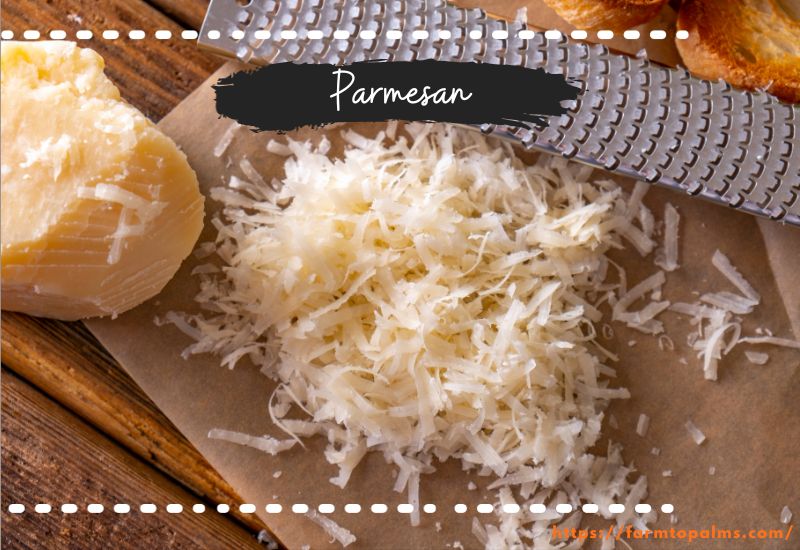
Parmesan, or Parmigiano-Reggiano, is a famous Italian cheese from Emilia-Romagna and Lombardy, particularly around Parma and Modena. It holds PDO status, confirming its authenticity and regional origin.
Less costly alternatives, like Grana Padano, imitate its style. Produced from cow’s milk, authentic Parmesan features a hard rind stamped with its name, typically discarded before consumption.
It’s known for its robust, savory flavor with salty and nutty notes and a complex, granular texture that results from 18 to 36 months of aging, which intensifies its taste.
Parmesan is a staple for grating over pasta, salads, and classic dishes like spaghetti carbonara and risotto.
Parmigiano-Reggiano
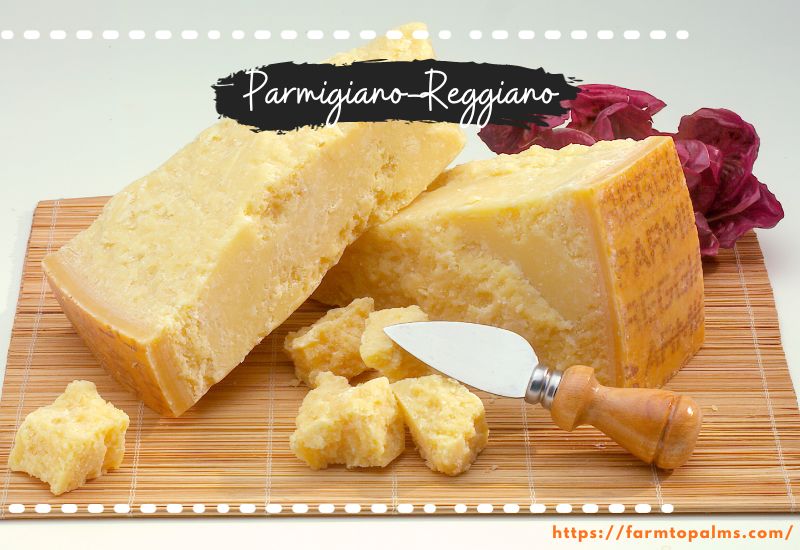
Parmigiano-Reggiano, a complex and granular cheese, is crafted from cow’s milk and is known for its pale-golden crust and straw-colored interior.
Typically aged for two years or more, with variants such as stravecchio (three years) and stravecchiones (four years), this cheese’s complex taste intensifies with age.
To earn its name, dubbed the “King of Cheeses,” Parmigiano-Reggiano must originate from Italian regions—Bologna, Reggio Emilia, Mantua, Modena, or Parma.
Both Italian law and European designation protect the authenticity of Parmigiano-Reggiano, ensuring its quality and traditional production remain exclusive to its origin.
Pecorino Romano
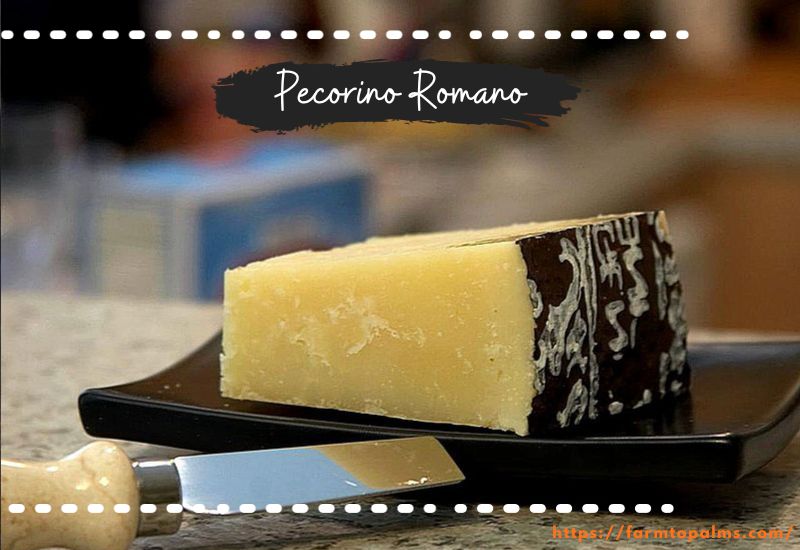
Pecorino Romano is a complex, salty cheese from Italy, made from sheep’s milk and commonly grated. Named for its ovine origin and Roman roots, its production predominantly occurs in Sardinia despite the “Romano” label.
Protected by E.U. law, this ancient cheese remains integral to Italian cuisine, especially in Central and Southern regions. It’s traditionally consumed on May 1st with fava beans on Roman countryside excursions.
Asiago Cheese

Asiago is a versatile Italian cow’s milk cheese from Asiago, Italy. It varies in texture from smooth when fresh to crumbly when aged.
Fresh Asiago is great for sandwiches and melting, while aged Asiago is often used grated in dishes like salads and pasta. Considered a Swiss-type cheese, it’s produced in Italy, the U.S., and Australia, among other countries.
Asiago enjoys protected status (DOP) in Italy, ensuring its traditional production in specific Veneto and Trentino-Alto Adige regions. To qualify for the “Product of the Mountains” label, it must be made using milk sourced from over 600 meters above sea level.
While Asiago remains a staple in its native region, global production has expanded due to its popularity and Italian emigration, turning “asiago” into a term for a style of cheese made worldwide.
Grana Padano
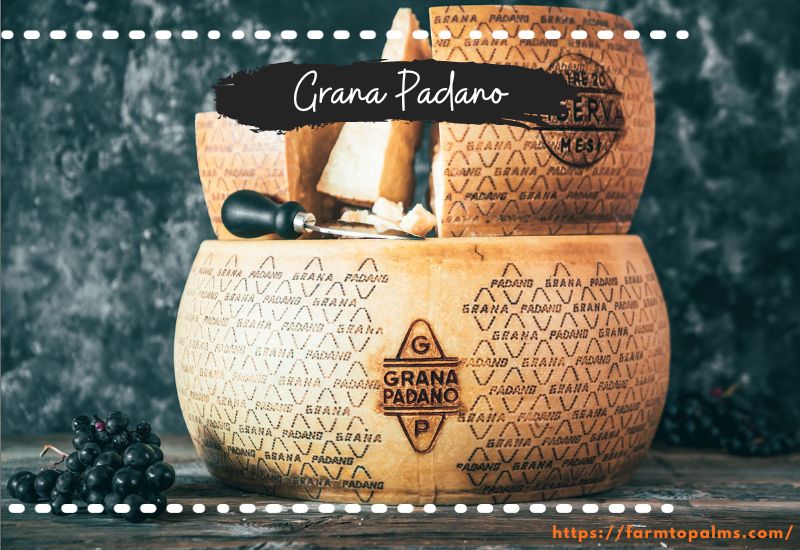
Grana Padano, a cheese hailing from Italy’s Po Valley, resembles Parmigiano-Reggiano. It is subject to less rigid production standards than its cousin.
This cheese, known for its complex and granular texture, is crafted from partially skimmed raw cow’s milk, following a natural creaming process. Since 1954, Grana Padano has been recognized as a product of Geographical Indication in Italy, ensuring the preservation of its traditional production methods and ingredients.
Moreover, it has held the status of a Protected Designation of Origin (PDO) by the European Union since 1996. It is a designation that safeguards its authenticity and is also recognized internationally under the Lisbon Agreement and various bilateral treaties.
Conclusion
Discover the world of cheese with our comprehensive guide to 30 popular varieties, each offering unique flavors and textures. Elevate your culinary creations by exploring fresh, blue, soft, semi-soft, semi-hard, and hard cheeses.
Whether you’re drawn to the creamy indulgence of Brie, the tangy sharpness of Parmigiano-Reggiano, or the crumbly texture of Feta, you can find these exquisite cheeses at Farm to Palms supermarket or order them online via our app. Expand your palate and enhance your dishes with our diverse selection of cheeses.
